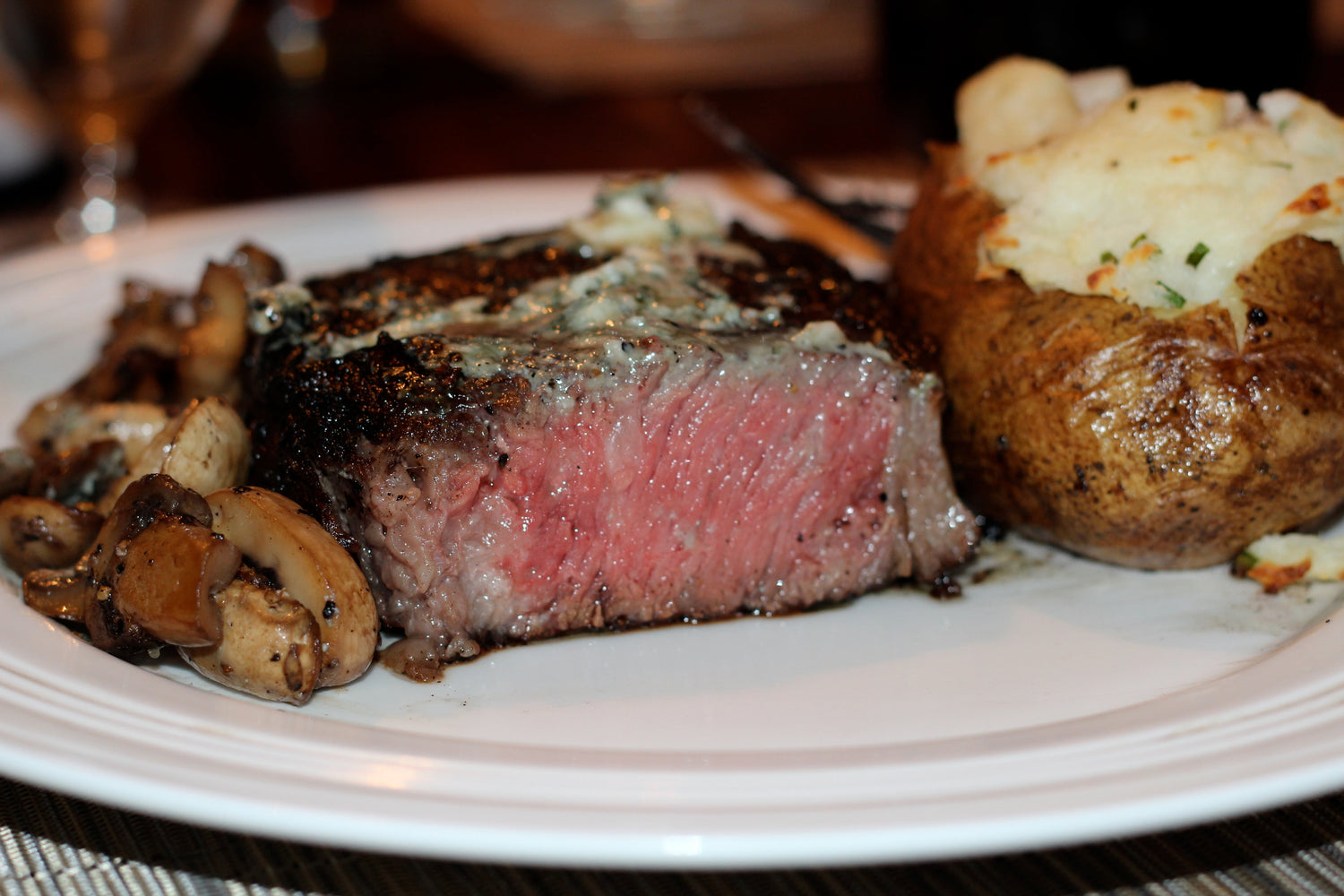There are a number of differences between Australian and American beef. The main difference being different breeds of cattle that are being fed a different diet than American corn fed Angus beef. The temperature differences and water quality play an important role as well.
Most American beef is raised in feed lots, where cattle is fed a high grain diet as opposed to most Australian beef that is raised on pastures. This results in very different flavour profiles, American beef being more marbled and having a deeper red color.
The Brahman breeds grass fed in the biggest beef producing state of Queensland taste a bit different than their Angus or Brangus cousins down in Texas.
Dry Aging of Beef is a process by which beef is stored in an environment of 2-4 degrees Celsius and moisture is allowed to evaporate from the cut of beef thereby concentrating beef flavour. Oxygen is allowed to feed the natural enzymes in the beef, these enzymes tenderize the beef, thereby making it more desirable to steak consumers.
Dry Aging Australian grass fed beef carries considerable benefit since it will concentrate the taste and the color of the meat, as well as tenderize often tougher fibers of grain fed animals.
UMAi Dry® Dry Aging bags allow importers of Australian Beef dry age right in their restaurant coolers or regular cold storage rooms. You can control the cuts you age and the dry aging time.




